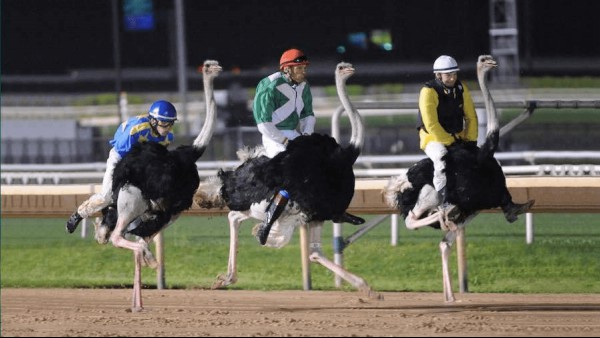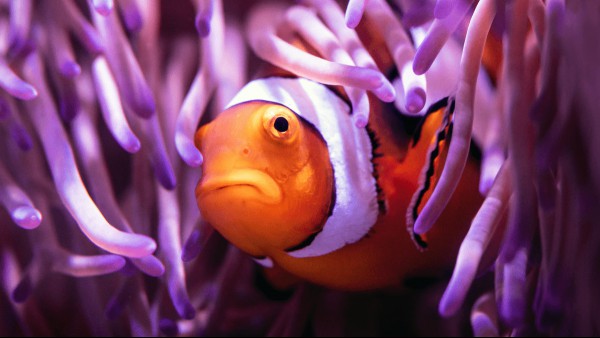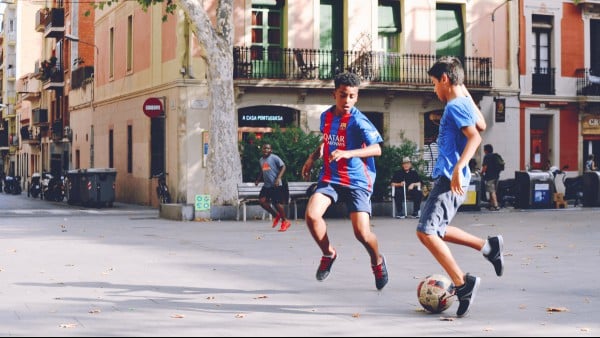¡Hola! If you are reading this, it’s not too late — if you want to learn Spanish, I’m more than happy to help you out in this great learning journey with the best tips to learn Spanish!
I’m Cristina, I come from Spain, and I will try to clarify common pain points for the Spanish learner through some videos that we made to educate, but also to entertain you, when learning my beautiful language.
¿Empezamos?
1. Learn How “To Be” (Ser And Estar, That Is)
Hola, soy Cristina. Estoy en Berlín.
One of the most important tips to learn Spanish is to see where English and Spanish treat seemingly simple things differently. Yes, both ser and estar mean “to be” in Spanish, so how can we know when to use one or the other? Let’s go briefly over how to conjugate them in the present tense:
| Pronoun | SER | ESTAR |
|---|---|---|
| yo | soy | estoy |
| tú | eres | estás |
| él/ella/usted | es | está |
| nosotros/nosotras | somos | estamos |
| vosotros/vosotras | sois | estáis |
| ellos/ellas/ustedes | son | están |
While ser is used to express things that are permanent, estar is used for temporary situations. We use ser to describe nationality, time, relationships, occupation and personal attributes. On the other hand, estar is used for locations, emotions and temporary conditions.
So, when having to use “to be” in Spanish, ask yourself first: Do I want to express something permanent or a personal attribute, or is it rather something temporary or related to emotions? Soy optimista. Estoy contenta. “I am an optimist. [personal attribute] I am content. [temporary state]”
2. Start Asking Questions (Properly)
When you’re learning a language, you’ll be asking a lot of questions. One of the best tips to learn Spanish, then, is to figure out early on how to do that. As in every language, there are a few Spanish question words that you will have to learn in order to ask pretty much everything. These words are:
| qué | what |
| quién | who |
| dónde | where |
| cuándo | when |
| cómo | how |
| cuánto/cuántos | how much/how many |
From asking when and where you’re meeting friends to how much a pair of sunglasses cost, all you need are these words combined with the right verbs.

3. Express Your Feelings
Equally as important as learning your questions is knowing your answers. Spanish native speakers are usually very talkative, so after you say your name and exchange a couple of words in Spanish, you’ll probably be asked a bunch of stuff, starting with:
- ¿Cómo estás? ¿Qué tal? (How are you? How is it going?)
Sharing and expressing your feelings is something “very Spanish” to do. People are not afraid of oversharing, so, not only will they ask, they will definitely tell you all about how they feel:
| Estoy muy bien. | I am very well. |
| Bien, gracias. | Good, thank you. |
| Estoy muy emocionado. | I am very excited (masc). |
| Me siento un poco triste. | I feel a bit sad. |
| Estoy enfadada. | I am angry (fem). |
| Estoy fatal. | I feel awful. |
As you’ve already learned in one of the above tips to learn Spanish, the verb estar can mean “to be” and, in this case, also “to feel.” ¿Estás aprendiendo? (“Are you learning?”)
4. Learn How To Say “No” (And Use Negative Expressions)
When expressing a negation in Spanish, no is placed before the verb.
- ¿Vamos al cine? (Shall we go to the movies?)
- No, no puedo. (No, I can’t.)
Even if we would always like to stay positive and say yes to everything, sometimes we need deny or reject things, and for those occasions the Spanish negative expressions will definitely come in handy. And yes, as you’ll see, the double negative is grammatically correct in Spanish!
| nadie, alguien, todos | nobody, somebody, everybody |
| nada, algo, todo | nothing, something, everything |
| nunca, siempre | never, always |
- ¿Quieres venir a la fiesta? (Do you want to come to the party?)
- No tengo tiempo para nada. (I don’t have time for anything.)
- Nunca tengo tiempo. (I never have time.)
- Nadie tiene tiempo. (Nobody has time.)
5. Master Por And Para (Once And Por All)
Dearest Spanish learner, I know you struggle a lot with the words por and para and when to use them. Por ese motivo (because of that), I want to try and clarify this for you, para que no cometas más errores (so you won’t make more mistakes).
When to use para: to talk about goals, purposes or destinations.
When to use por: for causes or reasons for something, and for time and prices.
Now let’s see some examples:
- Leo por las noches.
- Este regalo es para mi madre.
- Estudio mucho para tener un buen trabajo.
- Por este precio puedes comprarte otra cosa.
- Para ir a Argentina tengo que ir en avión.
Those are all the tips to learn Spanish now, though it’s only the start. Any questions? Please use the Spanish question words… and I’ll be happy to answer all of them!











